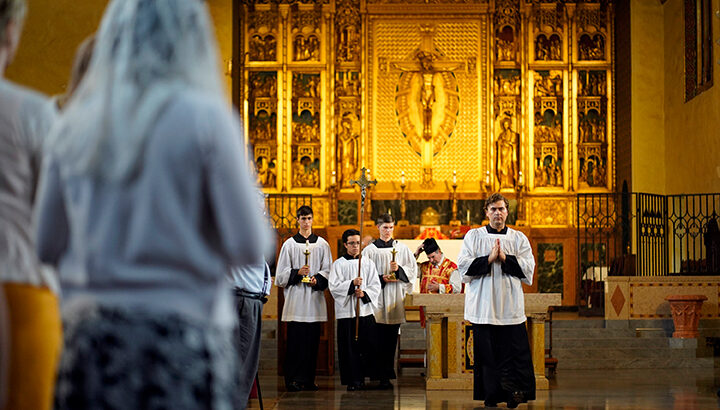Q: What’s going on with the Latin Mass, and why do some priests like to celebrate it while others don’t?
A: It’s good to keep in mind that priests are human beings who, like the rest of us, form personal opinions about things that are important to them. So your question is a rather complex and nuanced one, which is impossible to answer in a clear-cut way that will universally apply to everyone. But I’ll still try to hazard some guesses based on broad observable patterns.
For context, although the main liturgical elements of our Mass – such as the reading of the Gospel and the consecration of the Eucharist – have remained the same since the time of the Apostles, over the centuries there have been various evolutions and changes to some of the less central aspects of the liturgy.
Historically, it is not unheard of for ecumenical councils to make changes to the liturgy or to mandate uniformity to some degree.
One such ecumenical council was the Council of Trent, which convened in the mid-1500s. The Council of Trent revised the Roman Missal (ie, the book of prayers for the celebration of Mass).
Although there were a few minor adaptations over the years to the liturgy that the Council of Trent gave us, for the most part this same ‘version’ of the Mass was in use until 1962. This is the liturgy that has been referred to by a number of names such as the ‘Tridentine Mass,’ the ‘Traditional Latin Mass,’ or the ‘Extraordinary Form.’
Some 400 years later, the Second Vatican Council convened with the primary goal of ‘updating’ various aspects of the life of the Church to be more accessible to the faithful in the modern world.
In particular, in Vatican II, the Church sought to make the liturgy a more participatory experience for the lay faithful. As the Vatican II document Sacrosanctum Concilium phrases it: “Mother Church earnestly desires that all the faithful should be led to that fully conscious, and active participation in liturgical celebrations which is demanded by the very nature of the liturgy” (No. 14).
Some of the concrete changes that Vatican II introduced included an expanded cycle of readings and the possibility of celebrating Mass in the vernacular, or the local language of the people, instead of Latin.
Some people – clergy and laity alike – for various reasons remained attached to the way Mass was celebrated in 1962. So, in some circumstances, an ‘indult,’ or special permission to celebrate Mass in the pre-Vatican II way, was granted to priests on a case-by-case basis.
Then in 2007, Pope Benedict XVI issued the document Summorum Pontificum, which essentially gave open permission to any priest to celebrate the older ‘Extraordinary Form’ of the Mass. However, Pope Francis was concerned that this open permission was leading to discord in the church, and with the 2021 document Traditionis Custodes, special permission was once again required for a priest to celebrate Mass with the 1962 missal.
My thought is that priests might have strong feelings for or against the ‘Traditional Latin Mass’ because they have personal experiences of their non-preferred form of the Mass being celebrated badly. For example, many younger priests might recall troubling instances of the Vatican II Mass having been celebrated irreverently; many older clergy might recall rushed and mumbled celebrations of the pre-Vatican II Mass that left them feeling like a dissociated onlooker.
Other priests today might not have strong feelings against the 1962 missal by itself but are concerned with fostering a broader sense of unity by focusing on the main ‘Ordinary Form’ of the Mass.
One thing that is clear in any case is that as Catholic Christians we are called to approach all things in a spirit of patience and charity – including the issue of other Catholics’ liturgical preferences.
Jenna Marie Cooper, who holds a licentiate in canon law, is a consecrated virgin and a canonist whose column appears weekly at OSV News. Send your questions to CatholicQA@osv.com.



